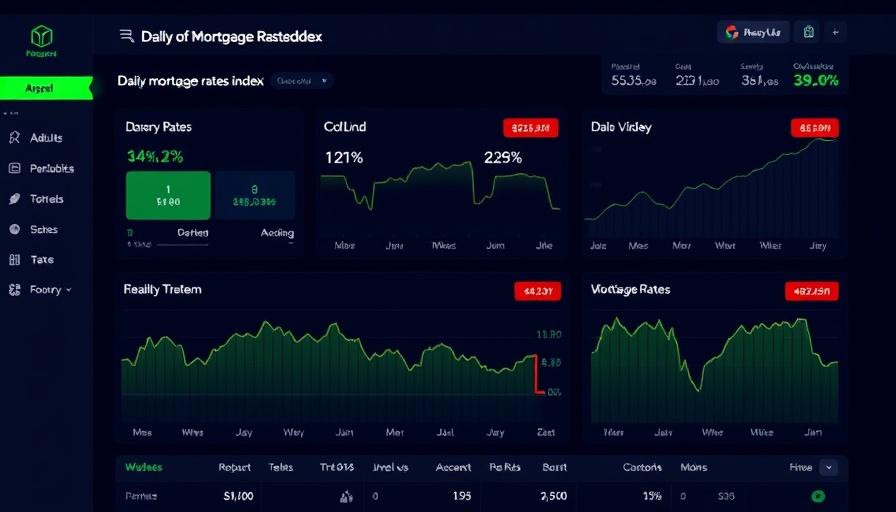
The Downward Trend: Mortgage Rates Hit a New Low
In an encouraging turn of events, mortgage rates have dropped to their lowest point in over a month. As of June 12, 2025, the average rate for a 30-year fixed mortgage stands at 6.85%, a slight decline from the previous highs seen on June 4. This recent dip is indicative of a broader adjustment influenced by ongoing shifts in economic indicators and bond markets.
Understanding the Bond Market's Role
The recent fluctuations in mortgage rates can be attributed primarily to the bond market’s response to pivotal economic data released over the past week. A report focusing on consumer inflation provided much of the impetus for today’s lower rates, suggesting that inflationary concerns are beginning to stabilize and ease among investors. On the other hand, the subsequent producer-focused inflation data did not significantly disrupt this positive trend.
Traders are increasingly optimistic about potential rate cuts by the Federal Reserve, with speculations growing for an additional cut before the end of the year. However, any impending cuts from the Fed's next meeting will not immediately translate into lower mortgage rates. This relationship between the Fed Funds Rate and mortgage rates underscores the complexity of bond valuation, primarily influenced by the duration of bonds, which are generally longer than the overnight loans that the Fed deals with.
A Closer Look at Current Economic Conditions
The strategic response of the bond market to economic indicators sheds light on the intricate dynamics affecting mortgage rates. With persistent inflation, market analysts are scrutinizing the Federal Reserve's actions, balancing the expectations of immediate cuts against broader economic conditions. Despite the Fed’s potential to reduce the Federal Funds Rate, longer-term mortgage rates are often dictated by different factors that may not react in tandem with overnight lending rates.
Ongoing monitoring of these rates is crucial for potential homebuyers and investors. Understanding the underlying economic conditions that influence the bond market will aid in better predicting mortgage fluctuations.
Broader Implications for Homebuyers
With mortgage rates reaching their lowest in over a month, prospective homebuyers may find the current conditions advantageous. This shift could signify a dwindling opportunity for lower monthly payments, making it imperative for buyers to make decisions promptly. By understanding the relationship between bond yields and mortgage rates, buyers can better navigate the complexities of making timely purchasing decisions in a fluctuating market.
Expert Perspectives: The Fed’s Strategy Going Forward
Experts predict that while the Fed may indeed pursue cuts, these moves won't correspondingly lower mortgage rates in the short term. Financial analysts suggest that any immediate adjustments to interest rates by the central bank will likely be absorbed within the market, causing rates to remain more stable despite changes in the Fed's policy.
Looking Ahead: Trends to Watch
As we progress through 2025, attention should remain focused on upcoming economic indicators and Federal Reserve meetings that have the potential to sway rates dramatically. Buying patterns are likely to shift as affordability becomes a greater concern amidst fluctuating interest rates. Homebuyers should be vigilant, staying informed on trends while considering locking in favorable mortgage rates.
Conclusion: The Need for Timely Decisions
Though rates are presently at a more manageable level, the landscape of mortgage loans remains unpredictable. Economic data will continue to impact market conditions, and stakeholders must adapt to these unpredictable variables. Buyers should weigh their options carefully, utilizing available tools and information to make informed decisions. The opportunity to secure reasonable rates may require swift action to capitalize on the current market climate.
 Add Row
Add Row  Add
Add 




 Add Row
Add Row  Add
Add 








Write A Comment